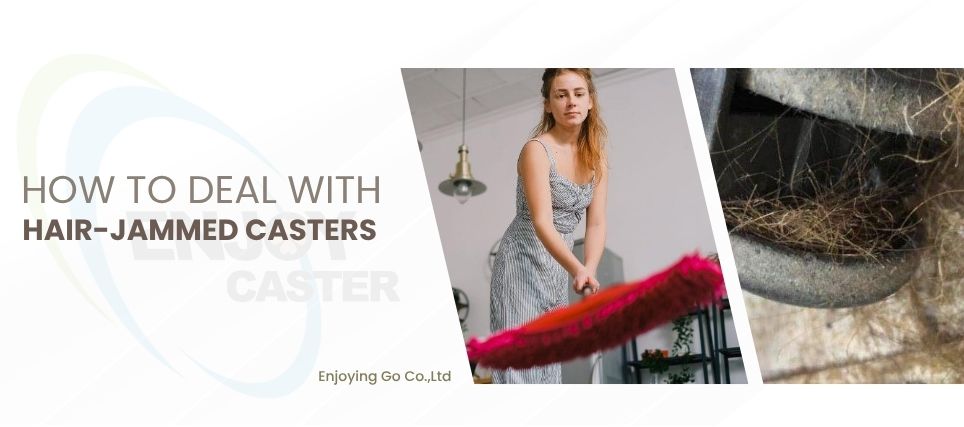How to Deal With Hair-Jammed Chair Casters: A Maintenance Guide for Workspace Efficiency
Technical Advice from Enjoying Go Co., Ltd. — Caster Supplier for Global Office Furniture Brands
In high-traffic work environments, it’s not uncommon for office chair casters to accumulate dust, hair, and debris, which can severely impact rolling performance. What starts as a minor inconvenience can quickly lead to dragging wheels, scratched flooring, and even safety hazards if left unattended.
At Enjoying Go Co., Ltd., we’ve helped countless workspace designers and furniture brands solve this small—but critical—maintenance challenge. Below is a practical guide tailored for facility managers, purchasing agents, and product designers to proactively manage caster hygiene and extend the life of seating products.
Why Hair-Bound Casters Are a Hidden Risk in Commercial Spaces
Over time, caster wheels naturally collect dirt, lint, and especially hair—which wraps around the wheel’s axle or between the wheel and housing. This is particularly common in industries such as:
-
Beauty salons
-
Restaurants and food service
-
Clinics and medical offices
-
Shared coworking spaces
When ignored, this buildup causes:
-
Wheels to jam or stop rotating
-
Dragging marks or black streaks on floors
-
Increased resistance while moving chairs
-
Risk of user tipping due to uneven rolling
Two Ways to Remove Hair From Office Chair Casters
Option 1: For Detachable Casters
-
Flip the chair over and remove the caster.
-
Use tweezers, needle-nose pliers, or a fine screwdriver to gently extract wrapped hair from the axle or side gaps.
-
Wipe down the wheel with a damp cloth or wet tissue to remove surface dust and grime.
Option 2: For Fixed/Non-Detachable Casters
-
Use pliers to pull hair out from the sides.
-
For thicker or tangled hair, carefully score it with a utility knife to loosen and remove it in segments.
-
Clean the wheel thoroughly afterward to prevent buildup from recurring.
We recommend performing this routine maintenance every 1–2 months, depending on usage intensity and environment.
When Cleaning Isn’t Enough — Replace Aging or Jammed Casters
Even with regular maintenance, casters can reach the end of their service life due to:
-
Years of friction and accumulated damage
-
PU degradation from moisture absorption (hydrolysis)
-
Warping or loosening of internal components
If wheels still feel rough, don’t spin evenly, or show clear signs of damage, it’s more cost-effective and safer to replace them entirely.
What Makes a Caster Hair-Resistant?
To reduce maintenance frequency and ensure long-term performance, we recommend selecting casters with anti-jam design features, such as:
-
Sealed or tight-fitting side covers to block hair intrusion
-
Dense, low-static PU surfaces that repel dust
-
Modular assembly for easy disassembly and cleaning
-
Compatibility with common stem sizes for various office chairs
At Enjoying Go Co., Ltd. we offer custom partnerships, caster solutions for OEM/ODM helping global brands build better, longer-lasting seating products.
Conclusion: Small Wheels, Big Impact on Product Quality and User Experience
Hair-bound or dirty wheels may seem like a minor detail, but for workspace planners and procurement professionals, they represent avoidable long-term costs in the form of floor damage, user dissatisfaction, and equipment failure.
By choosing high-performance, low-maintenance caster designs, your company can reduce downtime, improve workplace mobility, and enhance the total value of your product offerings.
Need help selecting the right caster wheels for your commercial-grade chairs?
Contact us, our technical team is here to help—from design to production and after-sales support.

